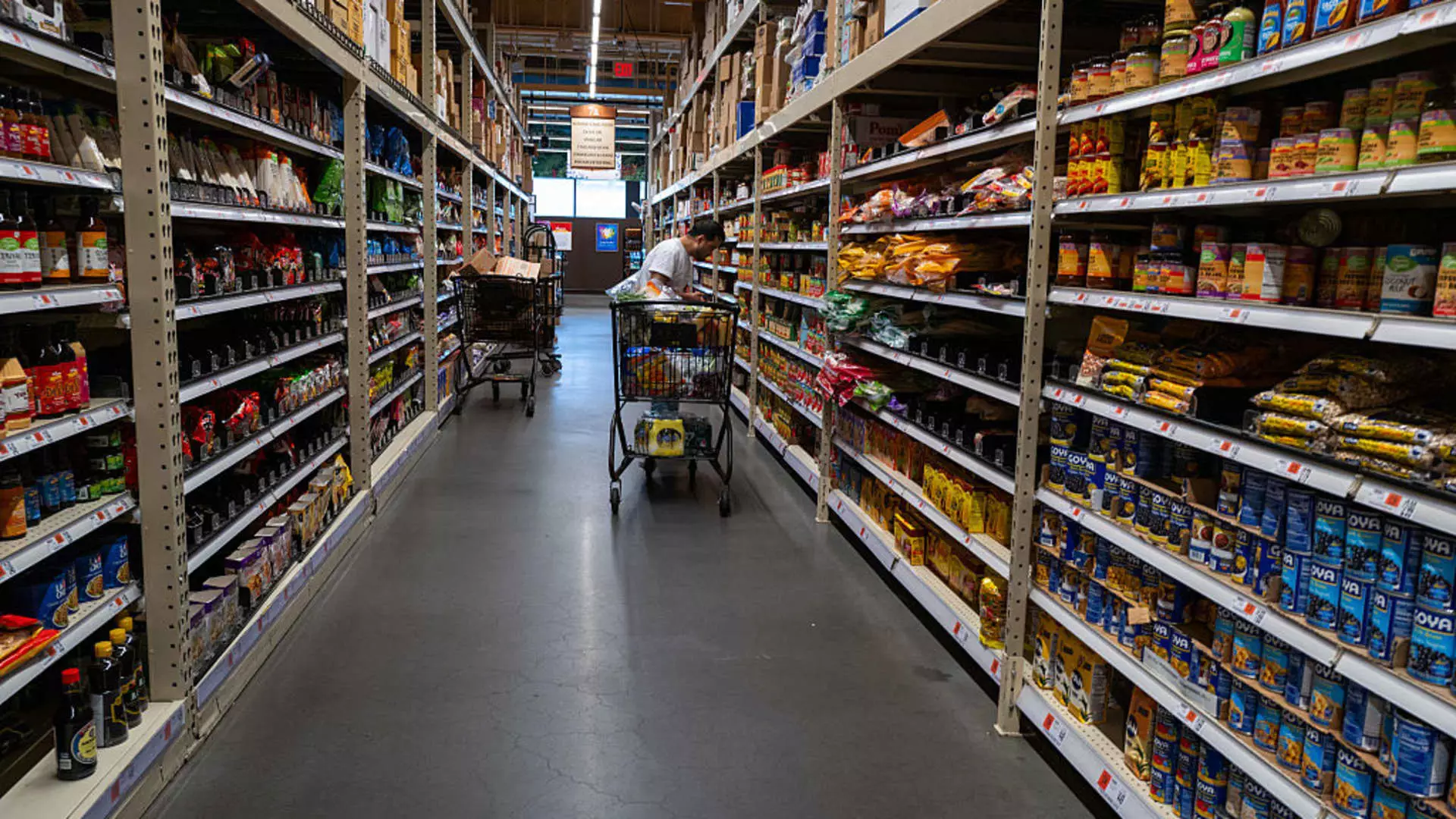In April, the economic indicators presented a rather disheartening picture of consumer sentiment and spending, a vivid testament to the hurdles now facing American households. With tariffs introduced by former President Donald Trump starting to ripple through the economy, data revealed that inflation barely moved—a mere 0.1% increase for the month. This stagnation might imply stability on the surface, but when viewed through the lens of broader economic consequences, it’s a stark indicator of consumer wariness and uncertainty.
The personal consumption expenditures (PCE) price index—the Federal Reserve’s favored measure of inflation—showed a year-over-year increase of 2.1%. While this number is technically in line with expectations, it catalyzes a troubling narrative. At a time when consumers ought to feel empowered to spend, we see an economic landscape littered with hesitation. The elusive promise of an upward economic trajectory is being stifled by tariffs and trade tensions, which have forced a cautious hand from American consumers.
The Unraveling of Consumer Confidence
Perhaps more concerning are the sharp brakes applied to consumer spending, plunging to a mere 0.2% increase for the month—far below the already modest 0.7% recorded in March. This dip is more than just numbers; it speaks volumes about a declining consumer psyche. A rise in the personal savings rate to 4.9% reflects a society bracing for an uncertain future, maneuvering through choppy waters rather than paddling confidently toward progress.
The data surrounding personal income presents a false sense of optimism. A 0.8% surge was reported, albeit this figure is far from the cause for celebration it appears. Instead of resulting in heightened consumer confidence and spending, it fuelled a more reserved response—a testament to the psychological toll inflicted by chronic uncertainty stemming from tariff policies and international relations. Wise consumers are choosing prudence over profligacy while the specter of inflation lurks, hinted at by economists who worry that tariffs may reignite inflationary pressures.
The Tension between Tariffs and Economic Growth
In a paradox that troubles economists, the push for tariffs was ostensibly aimed at balancing the unnerving trade deficit—with a staggering $140.5 billion recorded in March. Yet, those well-intentioned tariffs are starting to resemble looming threats more than solutions. While the intent to renegotiate trade terms may beckon a brighter future, the immediate aftermath reveals a jarring discrepancy between government policy and the lived economic realities of average Americans.
Trump’s tariff measures leading to a stand-off between broader economic wellbeing and nationalistic protectionism has resulted in a precarious balance. The decision to extend talks with affected trade partners rather than immediately implementing harsh tariffs may be a step toward reason. It also speaks to an admission of the limitations of aggressive trade measures, revealing the reality that higher prices and slower growth could lead us toward a state of stagflation—an economic disaster we have not endured since the bleak days of the early 1980s.
Political Interference in Monetary Policy
The mixed signals from the administration and the Federal Reserve create an atmosphere steeped in uncertainty. Trump’s insistence on pushing the Federal Reserve to lower interest rates reveals an essential tension: the perilous link between economic strategy and political interest. With the chairman of the Federal Reserve, Jerome Powell, clearly stating that monetary policy should remain independent, the dual pressures of political aims and economic realities present an awkward conundrum, sending shockwaves through market confidence.
This intertwining of politics and economics risks diluting the clarity needed to navigate today’s complex economic climate. It hangs over the Fed like a fog—obscuring its ability to make decisions unfettered by the machinations of political agenda. The path forward remains littered with risks that could jeopardize consumer confidence even further as consumers wrestle with both tariff-induced inflation and the rolling specter of stagnation.
As we stand at this crossroads, one cannot help but feel that the careful balancing act between protectionism and free-market principles is swaying perilously close to the edge, with tangible consequences set to ripple across American life. In the quest for economic recovery, we must tread lightly, lest we plunge further into the abyss.


Leave a Reply